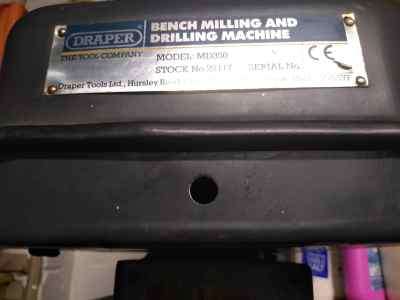The speed ranges of these generic mill/drills varied from make to make and model to model; low could be anything from 90 to about 200 and high from about 2000 to 2500, with usually 12 speeds on offer.
Tony Griffiths has some information about the ‘family’ here;
http://www.lathes.co.uk/sealey/
http://www.lathes.co.uk/naerok-mill-drill/
As regards ‘original equipment’ there is quite some difference in age between the first units and the later models and generally safety features were introduced only as a result of changes in legislation and ‘feature upgrades’ were rare – the very early Naeroks and Alpines were quite basic in terms of equipment, the later variants had guards, lock-outs, NVR switches and other safety features – it is possible that a manual for your particular Draper model is available on the net somewhere and that would show what the original equipment and fittings were.
I have 3 glass scales on a Warco Major, with the X-scale on the front in the ‘stop’ slot, the Y scale off the L/H side with the read-head hanging from a bracket on the saddle – the Y takes careful setting up because of the irregularity of the base, but once you’ve got it all in alignment, I guess it’s in alignment for ever. The ‘Z’ is clamped to the side of the head with the read-head on brackets attached to a bar that replaces the depth-stop rod.
I no longer have pictures available, but would put some in a gallery if you are interested – I would say that fitting a DRO to a mill is a complete game-changer and thoroughly recommended – it still is the best-spent money I have ever splurged on any accessory or measuring instrument.
I hadn’t considered a vernier system for the dials – without giving it much thought I think for some things it would work well, for others be a complete disaster – I’m trying to picture how backlash might effect it – I suspect that in the heat of an actual cutting operation, it could be one demand too many on one’s attention – for critical stuff, stops / gauge rods / dial gauges / bigger scales might be better? ..or a DRO, then none of it matters..
When tightening / loosening the drawbar on my Warco the rim of the pulley makes an adequate handhold to grip the spindle.
I don’t know about the hole – if you suspect that the machine had a work-light at some point, that would seem a handy spot for a switch, especially if fitted by a former owner perhaps?
Diogenes.





